2023 Work Orders
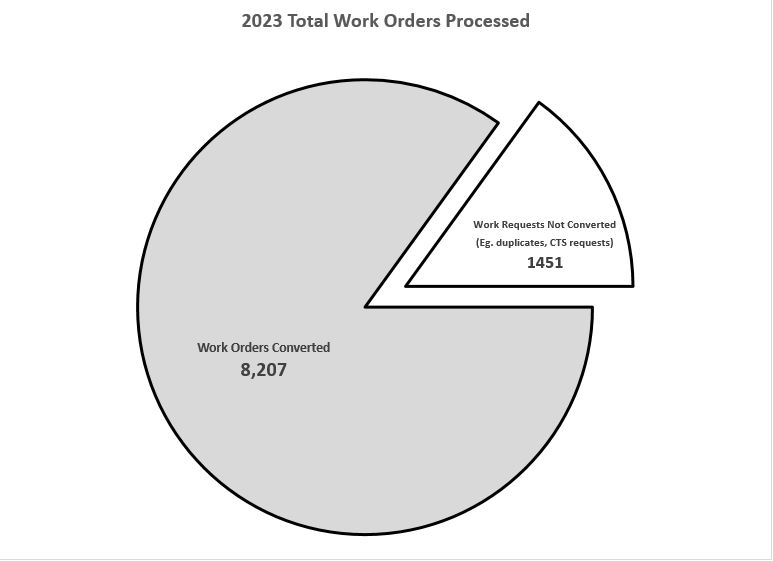
In 2023, Facilities Management received 9,658 work requests. Of these, 1,451 (15%) were not converted into work orders, either because they were duplicates of existing work orders, belonged to a different department (Eg. Campus Technology Services), or because they were not actionable.
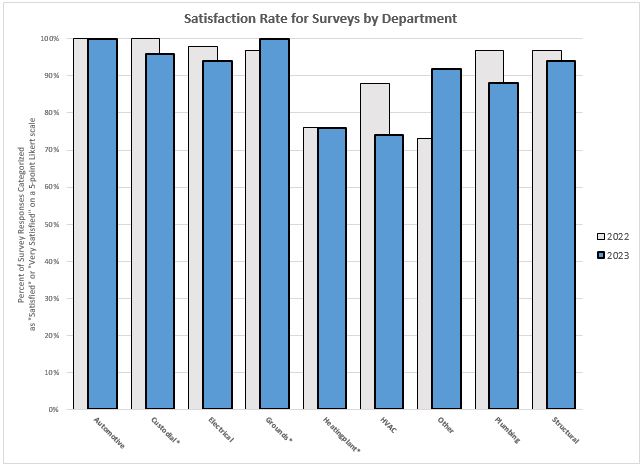
For all work orders closed in the system, customers are sent a satisfaction survey that asks users to rank staff professionalism, repair time, and satisfaction with the repair on a 5-point scale ranging from “Very Dissatisfied” to “Very Satisfied”. For those surveys that are filled out with a “Dissatisfied” or “Very Dissatisfied” answer, outreach is performed to the user to clarify their submission response and corrective action is taken (Eg. opening the work order for additional work, discussing with staff). Overall, 664 surveys were submitted of which 594 (89%) reported an overall positive satisfaction. This represents a 7% survey submission rate for work completed.
The Structural department received the greatest number of surveys at roughly two-fifths of the total submissions, however, they ranked fourth in overall satisfaction. Most departments remained the same or had a decrease in overall satisfaction rate compared to the previous year, less the Grounds department and “Other” category, which represents contracted services, administrative services, etc.
The following are the departments and their satisfaction rates for 2023:
- Automotive - 100% (equal to previous year)
- Custodial - 96% (down from 100%)
- Electrical - 94% (down from 98%)
- Grounds - 100% (up from 97%)
- Heating Plant - 76% (equal to previous year)
- HVAC - 74% (down from 88%)
- Other - 92% (up from 73%)
- Plumbing - 88% (down from 97%)
- Structural - 94% (down from 97%)
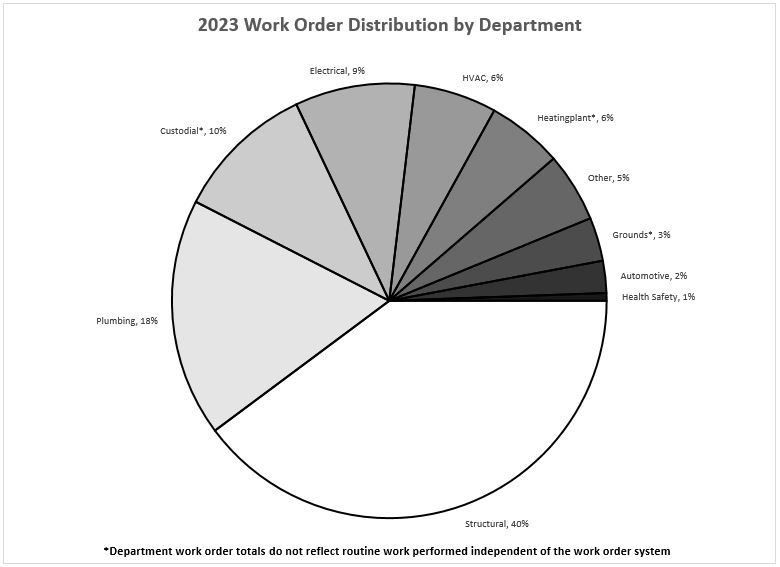
The Structural and Plumbing departments (each of whom filter to the same supervisor) accounted for nearly 60% of all work orders assigned, followed by Custodial and Electrical at roughly 10% each. Please note that these distributions may not fully reflect the complete volume of routine work that is performed independent of the work order system by departments such as Custodial, Heating Plant, Grounds, and Health Safety.
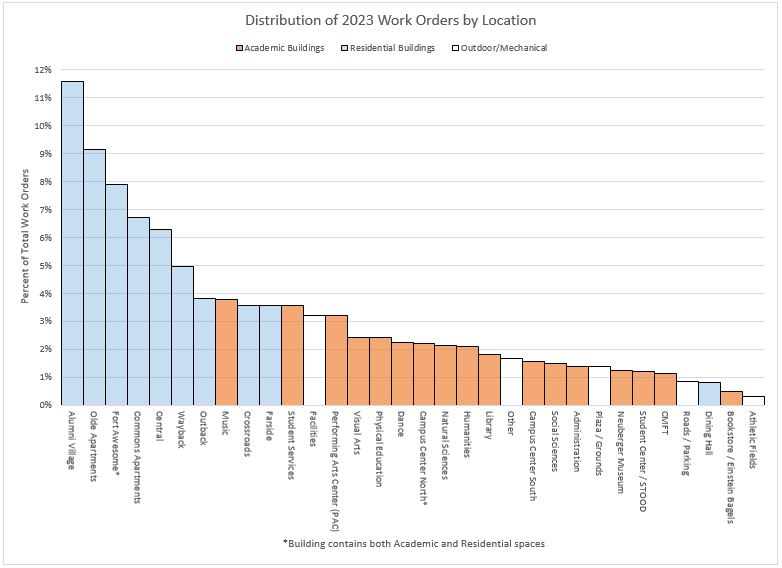
When accounting for work order location, the majority of work orders were submitted within residential buildings (59%), followed by academic (34%) and lastly outdoor/mechanical spaces (8%).
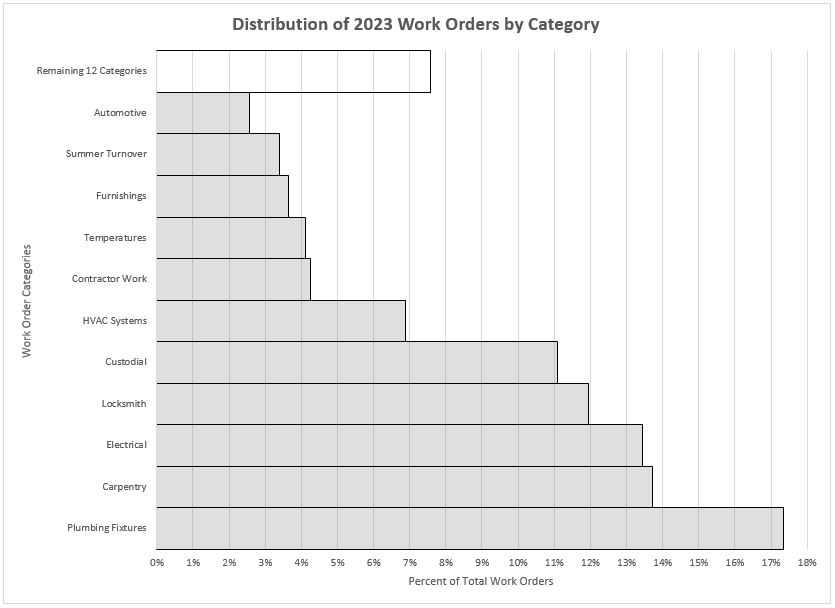
When evaluating the work orders by category (Eg. “Carpentry”), eleven categories (of twenty-three possible) represent 90% of the work assigned. Roughly 50% of the work assigned is categorized as “Plumbing”, “Carpentry”, “Electrical”, and “Locksmith” which similarly represent the most common concerns within Residential areas. Please note, while “Plumbing Fixtures” accounts for the greatest number of work orders by category, the Plumbing department is not assigned the greatest number of work orders. This discrepancy can be tied to the current arrangement of Facilities in which both the Structural and Plumbing shops report to the same supervisor and cover in a cross-functional manner within the confines of their positions.
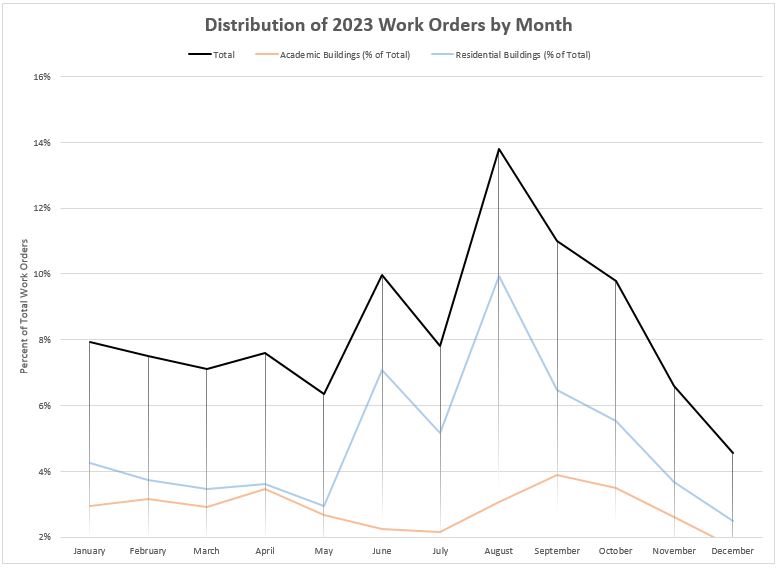
When evaluating work orders according to the date in which they were created, we can see that most work orders are created during the fall semester (39%), followed by summer/winter break periods (36%), and finally spring semester (25%). When further breaking this down according to location type (Academic vs. Residential), we can see that the Residential buildings, which comprise 60% of work orders generated, have a greater influence on the overall trend and act as the primary source of work orders during the summer and early fall months (June through August).
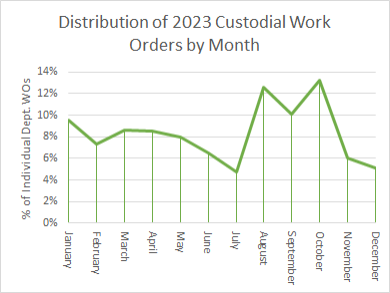
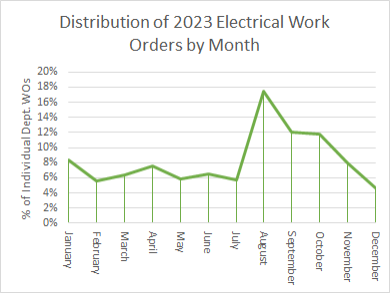
Further breaking this down by department, we see that both the Custodial and Electrical departments saw a relative peak in work during the months of August through October, representing nearly 40% of all work completed by each department during the year.
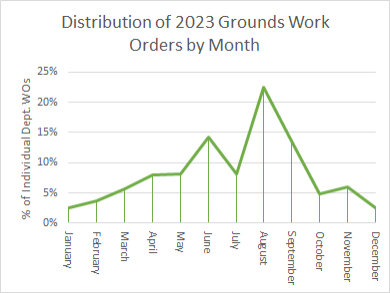
Meanwhile, the Grounds department completed nearly 60% of their workload for the year during the summer and early-fall months (June through September).
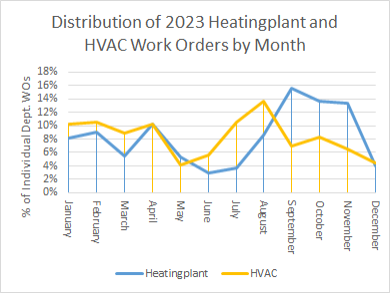
As the Heating Plant and HVAC departments work closely together to address temperature and building systems concerns, it was appropriate to identify the trend of each department against one-another. For HVAC (who generally handle temperature concerns within non-residential spaces), we can see that they have an uptick in workload during the summer months leading to a relative peak in August. For Heating Plant (who generally handle temperature concerns within residential spaces), we can see that they have a relative peak between the months of September through November. Each of these trends can be attributed to the buildings for which these departments are responsible and the schedules they tend to take (Eg. return of campus residents, summer orientation events).
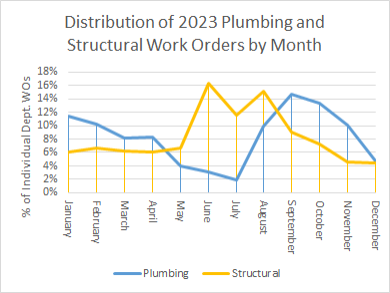
Similarly, the Plumbing and Structural departments (each of whom funnel to the same supervisor) have a cross-functional role within the campus, albeit with different individual trend lines. The Plumbing department sees an uptick in workload between the months of August through November, and again from January through March. These can be attributed to the return of student residents and increased usage of campus restrooms in academic areas at the start of each semester. Inversely, the Structural department sees a relative peak in workload during the months of June through September. This can likely be attributed to the summer residential turnover process, for which there are nearly 300 apartments and 650 residence hall bedrooms to repair, followed by reports filed by students moving into their fall housing assignments.